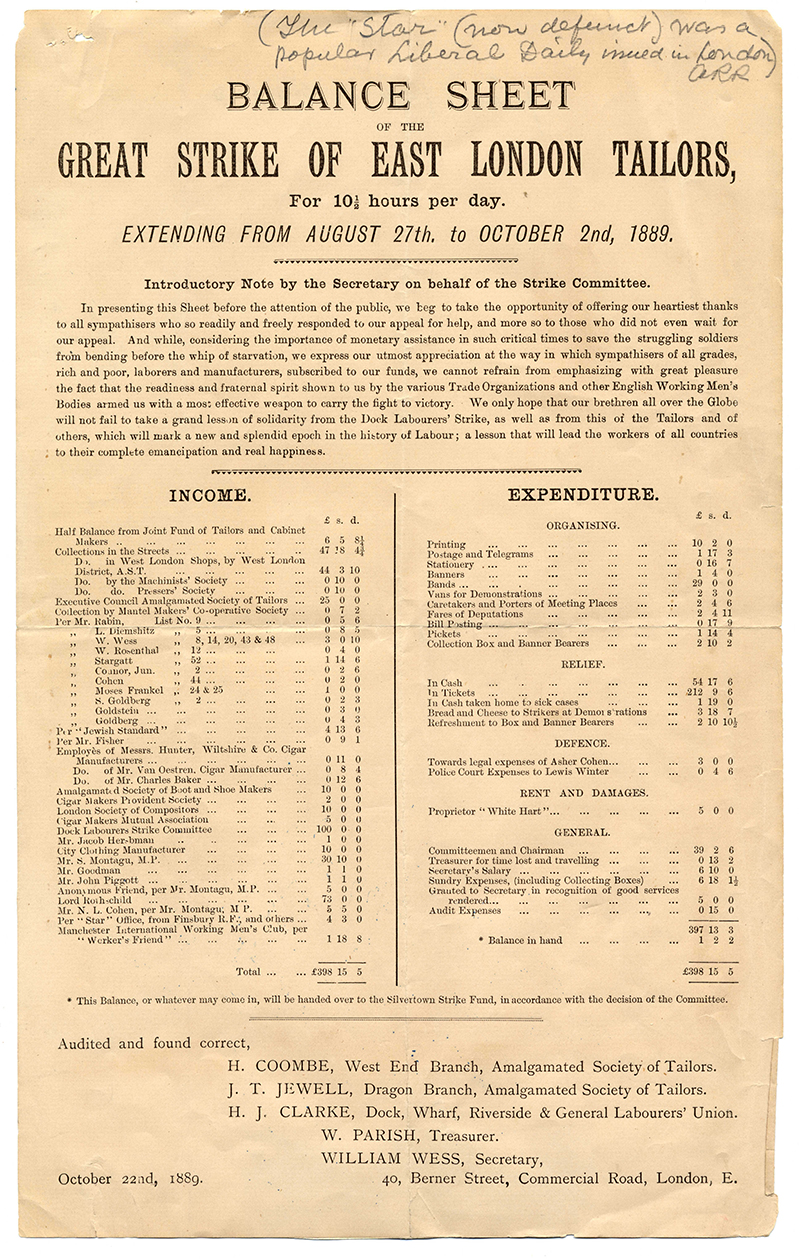Great Tailor’s Strike Balance Sheet

Balance sheet showing income and expenditures of the Great Strike of East London tailors, London, 1899, RG 116 England Territotial Collection, YIVO Institute for Jewish Research
This balance sheet of the great strike of East London tailors, 1889, comes from the YIVO Institute for Jewish Research. The TUC’s Union Online trade union history archive has this to say about the strike and document:
London Tailors Strike 1889 was called against the sweated conditions of the Jewish immigrants working in small tailoring workshops in Whitechapel.
The strike was called by the Amalgamated Society of Tailors and two smaller pressers’ and machinists’ unions. Their headquarters was the White Hart public house in Greenfield Street. The strike was linked to the other climactic events of 1888-89. Lewis Lyons, the chairman of the strike committee, was a member of the Social Democratic Federation and William Wess, the Secretary was a member of the Socialist League. As in the Dock Strike, daily street processions led by brass bands were organised and John Burns, Tom Mann and Ben Tillett spoke at their meetings. £100 was donated from the residue of the Dockers Strike Fund. Leaflets were printed in English and Yiddish and by September, 10,000 workers were on strike. Lord Rothschild and the local MP, Samuel acted as mediators with the employers and after 5 weeks, the strikers’ demands for a 10½ hour day and a limit on overtime were agreed.
Discover more Hidden Treasures
Hidden Treasures: Celebrating the documents, photos and artefacts in British archives that tell the story of Jews in Britain